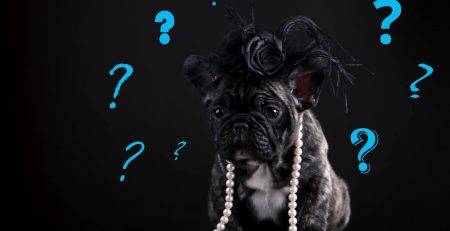History of the Norwegian Lundehund
What has six toes on each foot, is an amazing climber, and is great at stealing eggs? It’s the Norwegian Lundehund, also called the Puffin dog, is perhaps the most well-known among the dog breeds from Norway. This ancient breed is truly rare and unique, with a rich history that is worth exploring.
A Viking’s Best Friend
Far to the North, up in the Arctic Circle, are the Lofoten Islands. This archipelago is the homeland of the Lundehund. No one is certain how old the breed is, but archaeological evidence suggests that they developed in the early part of the second millennium. Research also points to the Norwegian Lundehund being a descent of a primeval dog species.
The Norwegian Lundehund was an important part of life on the Lofoten Islands. These Spitz-type dogs were very important working animals. The name “Lundehund” means Puffin dog; the breed gained this name due to their ability to hunt and retrieve Puffins. The dogs’ unique anatomy, such as their extra toes, meant that they could scale cliffs or crawl into caves to the Puffins’ nest. Here they could snatch birds or eggs to bring back to their masters.
Puffins and Plagues
Puffins were an important source of food and down (which could be used for bedding or warm clothing) on the islands, and were also important items for trade. This meant that most households would have a dozen Lundehunds, each of which was more valuable than a cow. There was a roaring Puffin trade in and from the Lofoten Islands, which began in the Viking Age and lasted well through the 17th century.
Unfortunately the government began to levy taxes on the Lundehund, making them expensive to keep. Gradually the breed’s popularity declined as alternative methods of hunting Puffins were developed. Once the Puffin was declared an endangered species, the Lundehund was out of a job. By the 1900s, the breed could only be found in the village of Måstad. Things got worse for the Norwegian Lundehund during the Second World War, as the islands were hit by Canine Distemper. This disease nearly drove the breed to extinction when it struck again in 1963, leaving only six surviving dogs: one in Værøy, the rest in southern Norway.
Back from the brink
Despite all the odds, dedicated breeders were able to rebuild the population of Norwegian Lundehunds. The sheer rarity of the dogs made it very difficult, especially since five of the dogs had the same mother, which created a genetic bottleneck. Thanks to strict breeding guidelines devised by a Swedish geneticist, and the dedication of breeders such as Eleanor Christie and Christen Lang, the breed began to recover.
Today there are approximately 1400 Norwegian Lundehunds worldwide, with the majority living in Norway. The breed is even regaining its old role of hunting birds, as Norwegian Air Traffic and Airport Management are experimenting with using Lundehunds to manage the bird population around Tromsø airport, in an effort to reduce airplane bird strikes.
Polydactyl Pups
The Norwegian Lundehund is a Spitz-type dog, with a curled tail and foxy little ear. They are quite small, only weighing six or seven kilos, and measuring up to 40cm in height. They have a thick, rough outer coat, with a much softer inner coat for warmth. They are typically red-brown or fawn, with black-tipped hairs, though they can also be white with dark markings.
Unlike other Spitz-type breeds, the Lundehund has some unique features. They are polydactyl, meaning that they have extra toes. Each foot has six toes, including two large dewclaws. These toes are fully formed, with all the normal muscles and joints.
The Norwegian Lundehund is also amazingly flexible. Their joints have a huge range of motion, allowing the dog to bend their heads backwards along their spine, and to move their forelegs away from their body at a 90 degree angle! Lundehunds can also close their ears to keep out dust and dirt. All of these features are handy for a Puffin hunting dog that would typically scale cliffs and crawl through caves in pursuit of prey. They are ridiculously good at climbing and squirming through tight spaces . . . though oddly enough the AKC classifies this breed as Non-Sporting!
A Curious Character
The Norwegian Lundehund is not a dog for everyone. They are absolutely charming, very sweet, but also exceptionally mischievous! You’ll need to keep an eye (or both eyes!) on your Norwegian Lundehund to keep them out of trouble. Those flexible joints and extra toes really help the Norwegian Lundehund to escape from right under your nose – usually straight into mischief. Most Lundehunds can easily climb walls or scale fences in the garden. They are also difficult to house train, and love to dig and bark. The Lundehund also likes to hide food (occasionally stolen) and shiny objects (almost always stolen).






















